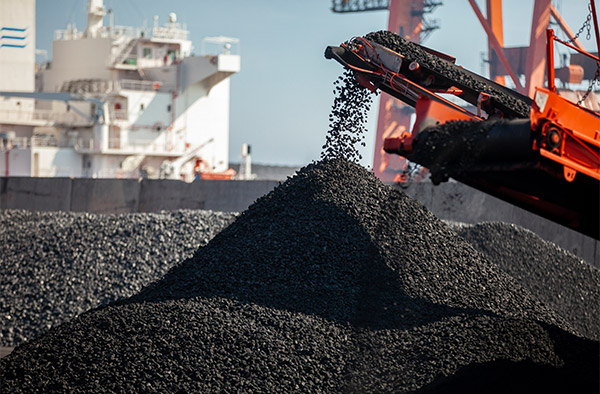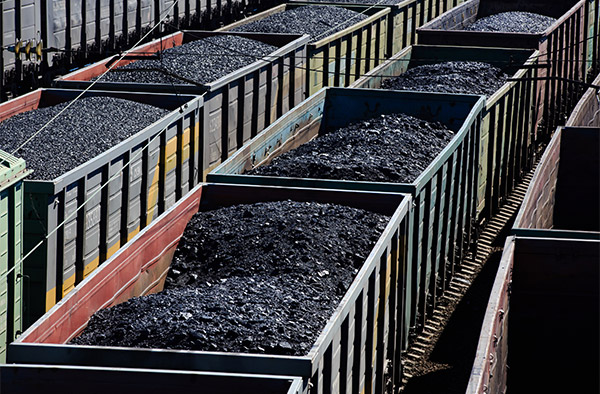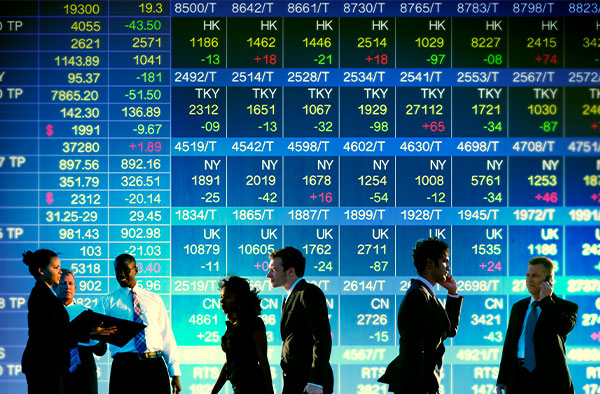

China’s Economic Woes Have Sparked a Gold Rush
The Chinese yuan has lost nearly 6% of its value against the U.S. dollar this year, while Shanghai-listed stocks are off about 8% from their 2023 high, set back in May. There’s an ongoing property crisis, with shares of Evergrande Group—China’s second-largest property developer and the world’s most indebted—halting trading on Thursday after its founder and chairman was reportedly taken into police custody for unknown reasons.
Against this backdrop, gold has emerged as a preferred investment alternative, acting as a hedge against financial volatility.
Gold prices in China have soared as a result, hitting a historic relative high with a more than $100 premium per ounce over metal prices in New York or London, according to Bloomberg. Data showing a 40% hike in withdrawals from the Shanghai Gold Exchange and a 15% increase in imports in August further underscore this trend.
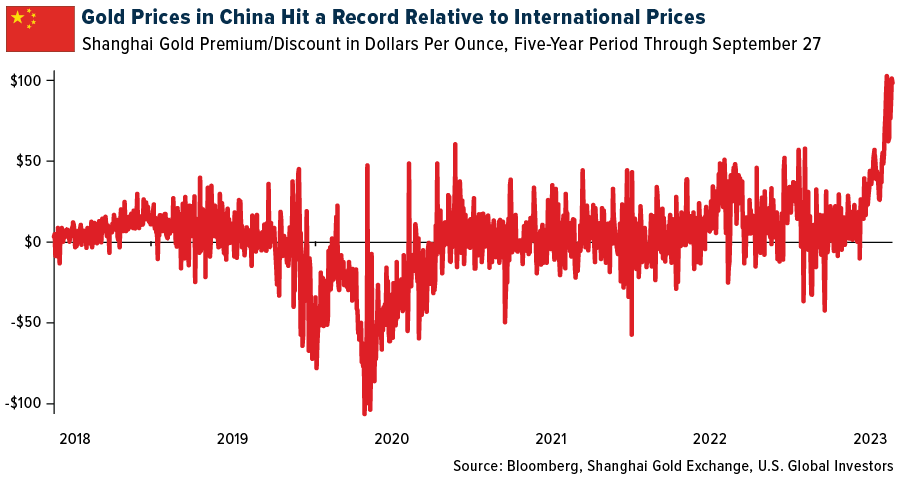
Looking ahead, analysts predict sustained demand for the yellow metal amid not just a depreciating yuan and shaky real estate market but also falling bond yields. The gold buying spree appears to represent an investment move—sales of bars and coins are up 30% compared to last year—but rising prices are also tempting jewelry buyers to make early purchases ahead of the busy Lunar New Year buying season.
Official Gold Reserves at a New Record High?
It’s not just China’s retail investors. The People’s Bank of China also continues to diversify its reserves with gold, so much so that one expert believes total official gold holdings by central banks have touched a new all-time high. Jan Nieuwenhuijs, writing for Gainesville Coins, estimates that global gold reserves peaked at 38,764 metric tons in June, surpassing the previous 1965 record by as much as 400 tons.
Nieuwenhuijs’s estimate, which accounts for unreported purchases unlike the International Monetary Fund’s (IMF) calculations, shows a notable increase in gold holdings since the 2008 financial crisis, as you can see in the chart below. This reflects what he calls a “desire by central banks the world over to diversify away from the U.S. dollar with its ever more evident counterparty risks.”
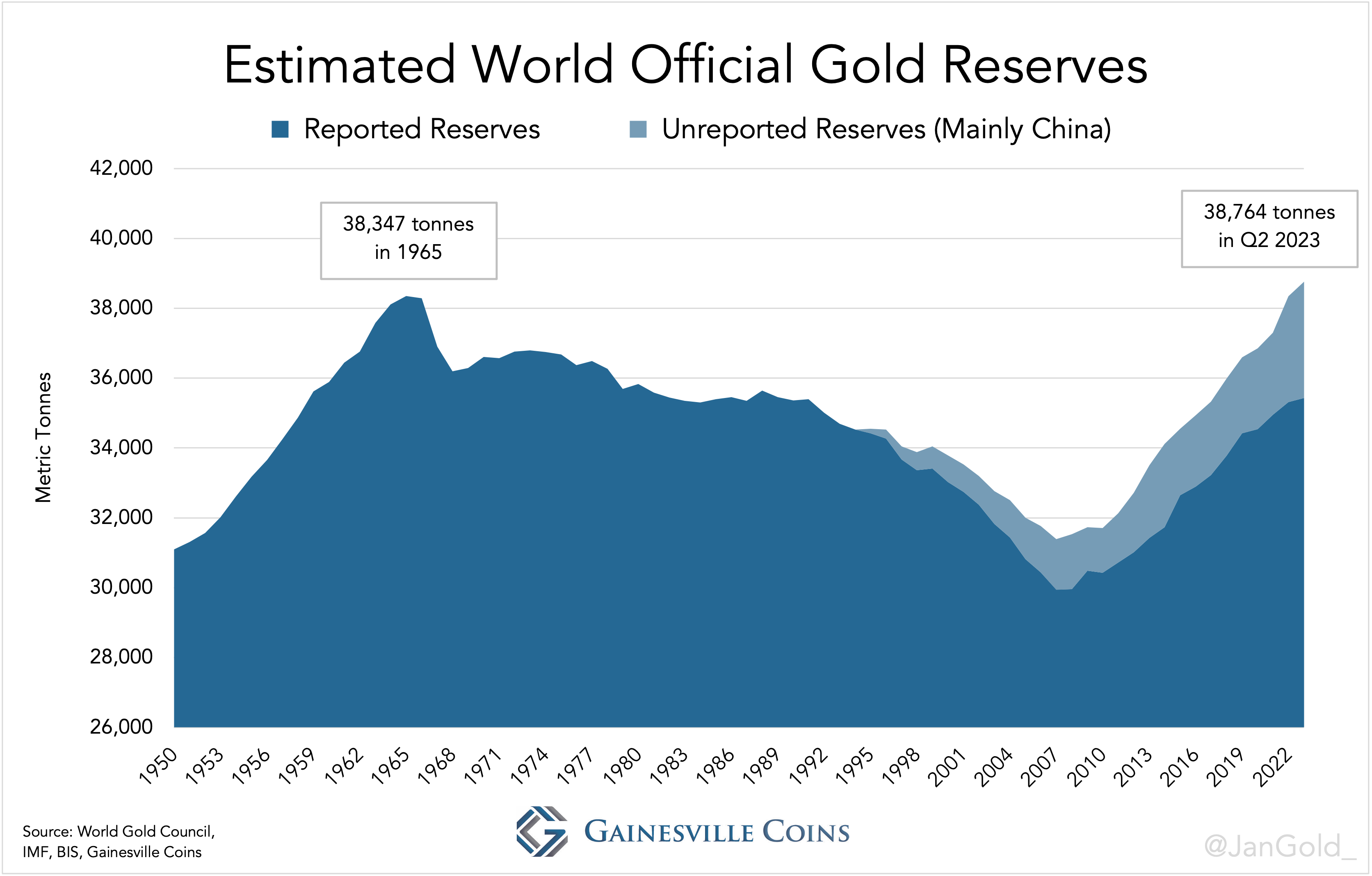
Costco—Yes, That Costco—Is Selling Out of Gold Bars. Why Not Gold ETFs?
Costco has recently added one-ounce gold bars to its online inventory, selling out within hours of restocking. According to CNBC, the retail behemoth offers bars from South Africa’s Rand Refinery and Swiss supplier PAMP Suisse, at prices slightly below the market rate of around $1,900. The offer is available only to the company’s 66 million paying members, creating an exclusive buying opportunity.
During the most recent earnings call, Costco CFO Richard Galanti said that the gold bars were selling like hotcakes, commenting that as soon as they’re listed on the company’s website, “they’re typically gone within a few hours, and we limit two per member.”
Interestingly, the enthusiastic demand from Costco buyers contrasts significantly with dwindling holdings found in total known physical gold-backed ETFs. As I shared with you last week, holdings have continued to decline since June—and, before that, since April 2022—even as the price of the yellow metal has held up admirably against a strong U.S. dollar and sky-high bond yields.
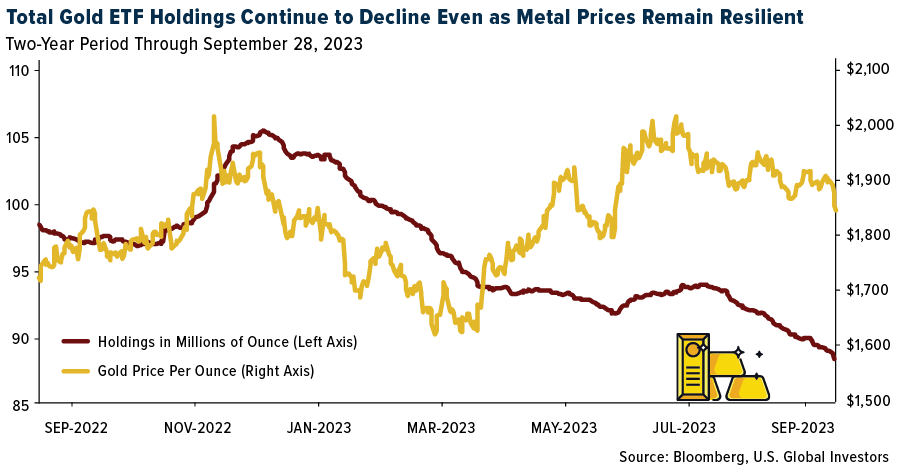
This week, the price of gold dipped below $1,900 for the first time since August, but if Treasury yields continue to soar through October, it could discourage casual gold investors, potentially driving prices down toward the $1,800 mark.
But then, the last time yields were this high—in September 2007—gold was trading at around $750. So again, the metal has been remarkably resilient in a very challenging monetary environment.
Why do Indian families invest in gold? Find out by watching our video here!

Index Summary
- The major market indices finished mixed this week. The Dow Jones Industrial Average lost 1.34%. The S&P 500 Stock Index fell 0.55%, while the Nasdaq Composite climbed 0.06%. The Russell 2000 small capitalization index rose 0.60% this week.
- The Hang Seng Composite lost 1.42% this week; while Taiwan was up 0.17% and the KOSPI fell 1.72%.
- The 10-year Treasury bond yield rose 14 basis points to 4.582%.
Airlines and Shipping
Strengths
- The best performing airline stock for the week was Turkish Air, up 7.3%. According to Morgan Stanley, cancellations represent 0.3% of scheduled flights, which was the lowest level of cancelations that U.S. airlines have achieved in over seven months. In addition, this compares to 0.7% last week and 1.9% the week before that.
- After hitting a two-and-a-half year low in mid-May, the Evercore ISI Air Cargo Companies Survey rebounded in June and July, before ticking down slightly in August and early September. This week, the survey rose from 50.4 to 51.5, a second week of improvement.
- According to RBC, Wizz Air management did not see signs of weakening with the demand environment in line with previous trends, and with forward bookings slightly ahead of last year. The CEO of Wizz Air remarked for 19 of his 20 years in aviation, he could broadly rely on the supply chain but not necessarily depend on the consumer, but he now felt he could rely on the consumer but not on the supply chain.
Weaknesses
- The worst performing airline stock for the week was Hawaiian Air, down 7.3%. JetBlue published an investor update tightening its top-line revenue guidance to the lower end of the prior range of down 4% to 8% year-over-year. The company attributed the reduced revenue outlook to operational disruptions in the Northeast region related to Air Traffic Control (“ATC”) constraints and weather in addition to lower-than-expected close-in leisure bookings in September. Additionally, JetBlue is raising its unit cost outlook to the high end of its prior guide due to the operational disruptions in the quarter and is marking-to-market for higher fuel.
- UBS highlights that combined weekly TEUs for the ports of LA + VA peaked around 177,000 tons in mid-August and have fallen 9% since then. Commentary from transports on a muted September versus August freight trends is more consistent with the Port of LA + VA data.
- Qantas expects the first half of 2024 fuel bill to be $200 million higher than prior guidance ($2.8 billion versus prior $2.6 billion). Qantas stated that it would absorb the incremental cost but will look to adjust settings if current (AUD) fuel price levels are sustained. Given the booking curves, this would mitigate the second half of 2024 incremental fuel impact.
Opportunities
- Volaris announced that it will extend leases for aircraft originally due to expire between 2024-2026 in order to help mitigate the impact of potential GTF engine inspections, as the company reportedly highlights 16 of its engines were scheduled for an accelerated inspection in September.
- According to Stifel, DHL Express expects to implement a General Rate Increase of 6% next year (after 7.9% this year) with higher stickiness than in the past. This ongoing strong pricing power looks to be supported by a highly consolidated industry.
- According to Bank of America, Ryanair is the biggest beneficiary of the recent supply constraints given its Boeing fleet, while Wizz has taken the biggest capacity cut given its fleet exposure to the GTF engine. The bank estimates that aircrafts with GTF engines manufactured between the fourth quarter of 2015 and the third quarter of 2021 represent 6% of the European short-haul fleet. Assuming around half of the inspections are over the next year, this would impact 3% of the European short-haul capacity with the remaining inspections spread out until 2026.
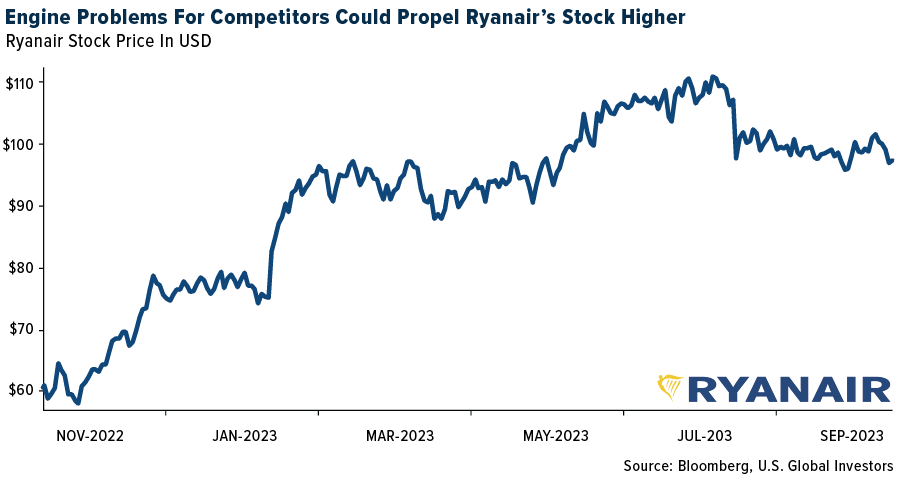
Threats
- Raymond James expects a greater than 50% chance of success of Spirit Airlines being acquired by JetBlue, resulting in $33.50-$34.15 per share in cash, but regulatory uncertainty remains high with little visibility and no historical precedent. Moreover, there is still a lot of uncertainty on the degree of the impact from the recently discussed GTF engine issue.
- According to UBS, commentary about trends at the Port of LA point to a meaningful sequential decline in September imports at the port compared to August and the expectation of generally flat volumes (sequential) over the next several months. Essentially this pattern would indicate the peak season for imports was earlier than normal, with August potentially being the peak month for activity.
- According to Morgan Stanley, Spirit Airlines, JetBlue Airways and Hawaiian Airlines have the most exposure to GTF engines. For the European carriers, they estimate 3% of the narrowbody fleet in the region may need to be inspected, representing a 1.5-2% hit to capacity that they assume would reduce thereafter (which should prove helpful for the likes of Ryanair, which has no direct exposure to the current issues). Wizz Air is the most exposed (they estimate 16% of its fleet could be impacted by the announced issues).
Luxury Goods and International Markets
Strengths
- Morgan Stanley upgraded Prada to “overweight” from “equal” weight, despite the equity’s price target being lowered to 58HKD from 65HKD (Prada shares closed at 46.1HKD on Friday). The broker is in favor of Prada’s strong management team, pointing to actions taken in recent months that will allow the company to increase sales and generate operating leverage against its peers.
- Lucid, an electric vehicle (EV) manufacturer, announced the opening of its global factory in Jeddah, Saudi Arabia, as part of an agreement aimed at advancing the transition to electric vehicles in the Kingdom. This aligns with Saudi Arabia’s commitment to purchase up to 100,000 vehicles from Lucid over a decade, as it seeks to reduce reliance on oil revenue and compete in the growing EV space. The new A.M.P-2 factory, situated in the King Abdullah Economic City, will initially produce 5,000 luxury electric sedans, Lucid Air, annually, with plans to expand its capacity to 155,000 cars in the future.
- Rivian Automotive was the best performing S&P Global Luxury stock, gaining 18.4% in the past five days. Shares gained on the expectation that the company will announce higher production data next week. Analyst consensus has Rivian’s third-quarter deliveries totaling 14,000, according to FactSet. Last year, Rivian delivered 6,584 cars in the third quarter. Production data will be delivered on Monday.
Weaknesses
- So far, 2023 has been a volatile year for luxury names. Most of the companies peaked in mid-July and since then have managed to erase most of their year-to-date gains. For example, shares of LMVH, the largest luxury conglomerate by market cap, listed in Europe and the United States, gained 38% from the beginning of the year to mid-July. However, since July, it has lost more than 25%, wiping out nearly all of its year-to-date gains. Shares of Richemont, another luxury giant, are already down for the year by 5%.
- Consumer spending in America was revised much lower, to a 0.8% annualized rate, according to data released Thursday. That’s down from the 1.7% rate reflected in the previous estimate. Spending in the second quarter grew at the weakest pace since the first quarter of 2022, when it was flat.
- Faraday Future Intelligence was the worst performing S&P Global Luxury stock, losing 66.2% in the past five days. The electric vehicle company, founded by Leshi Internet Information and Technology founder Jia Yueting, delivered only three vehicles in the current quarter, despite the company’s nine-year history and $3 billion investment, Bloomberg reported. Year-to-date shares declined 97.8%.
Opportunities
- Mercedes has confirmed its level 3 hands-free driving service, called Drive Pilot, will be offered as a $2,500 annual subscription for the 2024 EQS sedan and 2024 S-Class model through dealers in Nevada and California. The company claims that drivers can read a book while in motion on the road, while Tesla’s so-called “Full-Self Driving” Level 2 driving feature, with a price tag of $15,000, requires drivers to keep their hands on the steering wheel and their eyes on the road.
- Over the past decade, the ultra-wealthy have more than doubled their investments in apartments, specifically in multifamily housing, according to research from Knight Frank. Before the pandemic, the world’s rich were focused on office properties, but now with the rise of remote work and rising office vacancies, rental housing has become more popular among wealthy investors. Spain’s richest man, Ortega, owner of Inditex (Zara), has been buying offices, but last year he purchased New York apartment space to diversify his business.
- Coty, a beauty company, raised $356 million by listing its shares on a secondary market in Paris. This dual listing is a rare example of an American company going across the Atlantic in order to maximize its value by joining other luxury names already trading on the French market.
Threats
- On Monday, Bank of America’s analyst downgraded the French luxury company Kering to “underperform” due to a slowdown in China making it tough for the company to turn around its Gucci brand. Kering is also more exposed than its rivals to less affluent shoppers, who are likely to spend during an economic downturn. The broker also cut Prada and Richemont’s recommendations to “neutral,” and Tod’s was revised to “underperform.”
- On Tuesday, Morgan Stanley lowered organic growth forecasts by 200-500 basis points for most luxury players in the second half of this year. The broker said that the year-to-date sector growth was mostly driven by Chinese nationals. However, the demand from Chinese consumers has softened over the summer and is expected to weaken further in the third and fourth quarters of this year. The company also lowered the 2024 earnings per share forecasts by 2%-5%. Most of the large luxury names are trading around or slightly below their long-term historical average.
- Bloomberg reported that only the richest 20% of Americans still have excess pandemic savings. For the bottom 80% of households by income, bank deposits and other liquid assets were lower in June this year than they were in March 2020, after adjusting for inflation. All income groups have seen their balances decline in real terms from a peak in 2021, according to the latest Federal Reserve study of household finances.
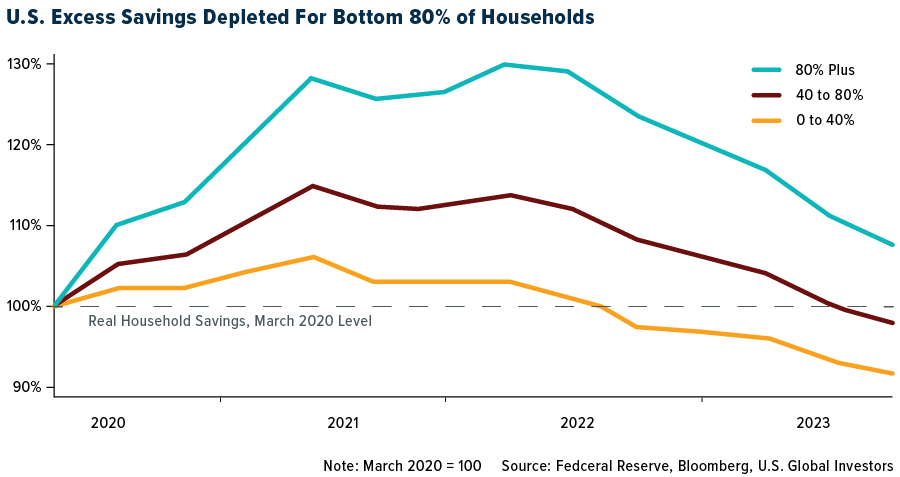

Energy and Natural Resources
Strengths
- The best performing commodity for the week was lumber, climbing 3.73%, as rising building permits over the last two months set the stage for a pickup in lumber demand. Oil is headed as high as $150 a barrel unless the U.S. government does more to encourage exploration, according to Continental Resources, the shale driller controlled by billionaire Harold Hamm. Crude output in the Permian Basin will one day peak as it already has in rival shale regions such as the Bakken region of North Dakota and the Eagle Ford in Texas, Continental Chief Executive Officer Doug Lawler said during an interview with Bloomberg TV. Without new production, “you’re going to see $120 to $150” oil, Lawler said.
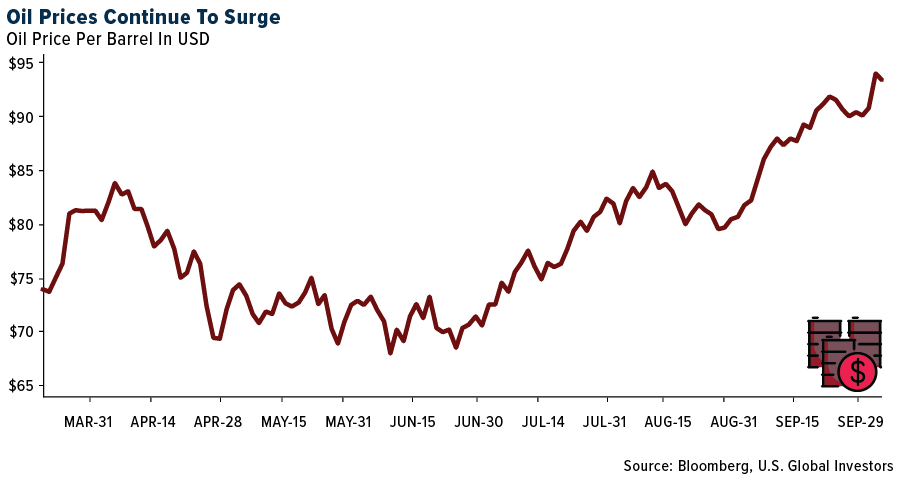
- European gas prices continued to rally, up 15% recently, in what could be a positioning-driven move following the failure of the market to fall sharply on the Australia LNG strike resolution.
- According to Canaccord, uranium equities are up 16% in the last month on the back of positive price momentum with the spot price currently sitting at US$70 per pound, a 12-year high. In Canaccord’s view, the market remains in a structural deficit, and with secondary supplies on the decline and inventory levels near recent lows (or immobile), the group remains fundamentally bullish on the sector.
Weaknesses
- The worst performing commodity for the week was wheat, dropping 6.73%, as expected production and quarterly stockpiles reported by the USDA were higher than analysts’ expectations. According to industry checks in Guizhou, coal mines in Panzhou have halted operations following a mining accident. Based on official statistics, mining capacity in Panzhou totals 45.4mt.
- According to Morgan Stanley, global steel production fell 3.8% in August month-over-month, dipping below its five-year average (though growing 2.2% year-over-year). Production in China saw its most convincing fall since the start of the year, down 5% month-over-month, but still up 3% year-over-year. The latest CISA production survey from mid-September also points to a sequential decline, falling 1.4% versus the previous 10 days, and 1% year-over-year.
- Iron ore fell to a two-week low after the re-emergence of debt problems at China Evergrande Group highlighted that a crisis in the nation’s property sector is
still far from over. Evergrande’s mainland unit failed to repay an onshore bond and defaulted on 4 billion yuan ($547 million).
Opportunities
- According to ISI, hydrogen stands out as one of the group’s favorite clean energy verticals, highlighting its immense growth potential. It benefits significantly from the ongoing energy transition, supported by favorable government policies and a wide range of applications. While many think about hydrogen as an energy source, particularly for material handling and industrial lift trucks, they believe hydrogen’s potential extends far beyond that, with tremendous value that could be unleashed through opportunities including energy storage, backup power generation, alternative energy fuels, and compatibility with traditional gasoline-powered internal combustion engines with minimal adjustments.
- Crude oil supplies in the U.S. are facing a squeeze as inventories at Cushing, Oklahoma, the delivery point for U.S. crude futures, faces seasonal lows that are just above the 2014 lows. Veteran oil consultant now turned fund manager at Black Gold Investors LLC opined “If we’re running out of oil at Cushing, then we’re running out of oil in Europe, because it relies on U.S. exports.” Despite U.S. production nearing record levels with Permian production hitting a new high, markets remain tight with the rig count falling 20% since late November, as reported by Bloomberg.
- According to Morgan Stanley, DLE (direct lithium extraction) is a technology that has been getting a lot of attention, particularly since the government of Chile announced that it will be required in future lithium projects. DLE is relatively small today, but Morgan Stanley expects many projects to announce this technology in the next few years, with production reaching 350,000 tons by 2028. It creates a relevant 2-3x increase in lithium volume out of brine mines, as it improves lithium extraction yields, significantly reducing operational lead times (from 18 months to 2-4 weeks).
Threats
- According to UBS, Nymex gasoline crack (HUCl1 index) has seen a $25/bbl correction in just the last five weeks, and equities have not moved down despite a big correction in gasoline crack. UBS acknowledges that some of the weakness would be a direct result of refiners trying to get rid of surplus summer grade gasoline before the switch to winter grade happens.
- Copper in London traded at the widest contango since at least 1994 as inventories expand and demand concerns persist amid a slowdown in global manufacturing. The cash contract changed hands at a discount of $70.10 a ton to three-month futures on the London Metal Exchange on Monday, before rebounding partially on Tuesday. That is the widest level in data compiled by Bloomberg going back almost three decades.
- Nickel extended its decline to the lowest level in 14 months amid increasing supplies from Indonesia and China and a weaker demand outlook for industrial metals. Prices have slumped 38% this year, the biggest loss among the main metals on the London Metal Exchange. Nickel, which is used in stainless steel and electric vehicle batteries, is in a downward spiral because of rising supplies from new plants in Asia following a historic short squeeze last year.
Bitcoin and Digital Assets
Strengths
- Of the cryptocurrencies tracked by CoinMarketCap, the best performer for the week was Compound, rising 19.43%.
- One of crypto’s biggest decentralized lenders has doubled down on its decision to invest billions of dollars in U.S. government bonds, propelling its token to an 18-month high. MKR, the governance coin of the MakerDAO protocol, has soared 77% this quarter to reach its highest level since April 2022, writes Bloomberg.
- Asset manager Valkyries started buying Ether (ETH) futures contracts, after getting approval to convert its existing Bitcoin futures exchange traded fund (ETF) to a two-for-one investment vehicle, according to Bloomberg.
Weaknesses
- Of the cryptocurrencies tracked by CoinMarketCap, the worst performer for the week was IMX, down 12.68%.
- Binance said it exited its Russian business by selling it to CommEX, a crypto exchange that says it officially launched on Tuesday. “As we look toward the future, we recognize that operating in Russia is not compatible with Binance’s compliance strategy,” wrote the CCO in a blog post according to Bloomberg.
- One year after “the Merge” that transformed Ethereum into a proof-of-stake blockchain, the native token has defied hopes that the seminal event would trigger a rally. It is little changed since then and has underperformed bigger Bitcoin, writes Bloomberg.
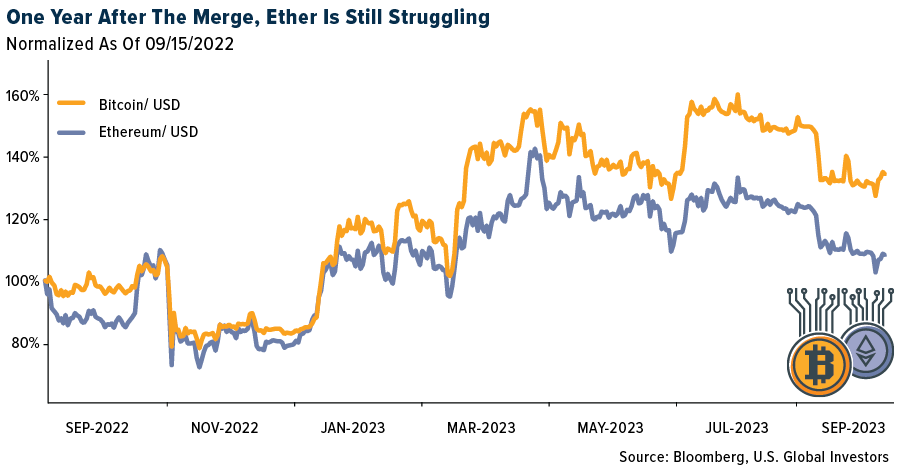
Opportunities
- Binance is seeking to launch stablecoins denominated in the dollar, euro, and yen in Japan next year, as the embattled global crypto exchange pushes into the nation’s nascent market, writes Bloomberg. Binance Japan wants to introduce the three tokens and potentially more in 2024 through a partnership with Mitsubishi UFJ Financial Group’s trust banking arm.
- Coinbase global said it earned regulatory approval to offer perpetual futures to retail customers outside the U.S., finally giving it an entrée into what has grown to be crypto’s largest market, according to Bloomberg.
- Kraken plans to offer trading in U.S.-listed stocks and exchange-traded funds (ETFs). Kraken will initially offer trading in the U.S. and UK through a service built by a new division called Kraken Securities, writes Bloomberg.
Threats
- The U.S. Treasury’s Office of Foreign Assets Control (OFAC) has sanctioned an Ethereum wallet tied to Jimenez Castro, a Mexican male with ties to the Sinaloa cartel. The wallet in question was first active in January of this year and received around $740,000 in deposits to Binance in a two-month period, according to Bloomberg.
- Crypto exchange Gemini withdrew hundreds of millions of dollars from Genesis Global Holdco several months before the lender froze deposits and ultimately filed for bankruptcy, writes Bloomberg.
- AirBit Club co-founder Pablo Renato Rodriguez was sentenced on Tuesday to 12 years in prison, plus three years of supervised release, for his role in orchestrating a $100 million global cryptocurrency pyramid scheme. A U.S. district judge ordered Rodriguez to forfeit $65 million, along with millions of dollars’ worth of real estate and other property, reports Bloomberg.

Gold Market
This week gold futures closed at $1,864.70, down $80.90 per ounce, or 4.16%. Gold stocks, as measured by the NYSE Arca Gold Miners Index, ended the week lower by 6.77%. The S&P/TSX Venture Index came in off 1.97%. The U.S. Trade-Weighted Dollar rose 0.56%.
Strengths
- The best performing precious metal for the week was palladium, but still off 0.17%. The average risk score for Scotia’s coverage list of gold companies has improved over the last decade from 56 (out of 100) in 2011 to 64 (out of 100) today. Despite the companies entering new jurisdictions over this timeframe, portfolios have been upgraded with an increasing number of asset acquisitions and mine builds in lower-risk jurisdictions (and asset sales in higher-risk jurisdictions). Lower-risk jurisdictions now make up 40% of NAV, while higher-risk jurisdictions make up only 36% of NAV.
- The central bank of Tanzania has already bought and refined 418 kilograms of gold, according to an emailed statement. The bank is buying the precious metal from artisans, mid-sized and large-scale miners.
- Ghana’s central bank has bought about 13.7 tons of gold, as part of metals buying for reserves and to support oil imports, Bank of Ghana Governor Ernest Addison told reporters in the capital, Accra.
Weaknesses
- The worst performing precious metal for the week was silver, down 6.12%, as expected, with the fall in gold. The yellow metal experienced its biggest weekly decline in more than a year as the dollar rallied and bond yields gained amid speculation that central banks will keep interest rates elevated for longer to rein in inflation. A gauge of greenback strength rose for a fourth day, soaring to the highest level this year, while a selloff in the bond market saw 10-year Treasury yields hitting the highest level since October 2007.
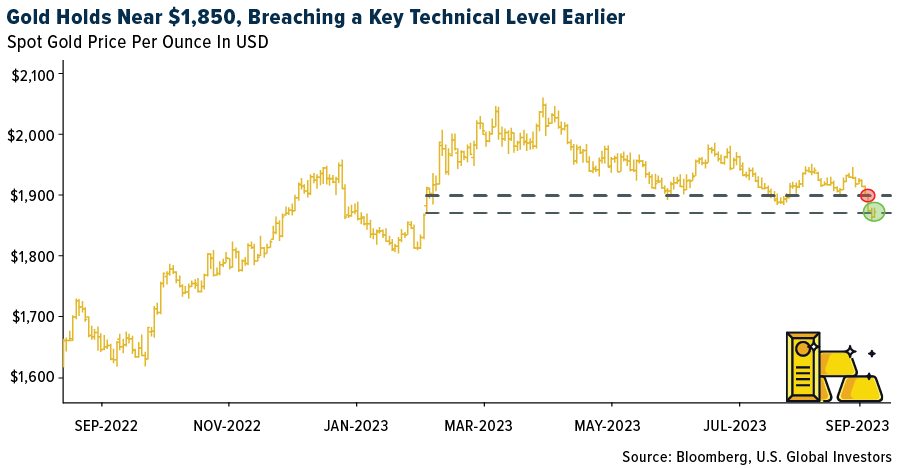
- ETFs backed by gold are now on track for the biggest weekly outflow since June. According to Bloomberg, Blackrock Inc.’s iShares Gold Trust saw a particularly large outflow of 13 tons of gold this week. In contrast to some investors leaving gold ETFs, reports from Bloomberg show that Costco is now selling 1 ounce gold bars. The retailer limits their member purchase to just two bars, but the company’s CFO says they typically sell out “within a few hours,” upon delivery.
- According to RBC, Sandstorm announced a restructuring of its two Mercedes stream agreements with the operator, Bear Creek Mining. Combined, these streams represent 5% of SAND’s NAV and 12% of EBITDA. Revised terms are negative to SAND and reduce the company’s projected cash flow for debt repayment, partially offset by improved Mercedes clarity and financial positioning for the operator. RBC’s analysis outlines that revised terms could reduce SAND NAV by 2% and 2024E/25E corporate EBITDA by 10%.
Opportunities
- JPMorgan forecast global mined silver production growing by just 0.8% year-over-year in 2023, marking a second consecutive year of around 1% year-over-year growth. Amid this relatively constrained supply backdrop, the bank expects silver demand to outpace supply for the third consecutive year in 2023. Overall growth in industrial applications of silver this year has been insulated by continued strong demand from photovoltaics.
- K92 Mining has secured a $100 million loan from commodities trader Trafigura and amended a deal for the copper and gold concentrates produced at K92’s Kainantu mine in Papua New Guinea. The loan will have a four-year term from the data when the first advance of funds is made, includes competitive interest rates and a one-year interest-only repayment grace period. The loan from Trafigura will be secured by, among other things, a charge over the assets of K92 Mining’s Papua New Guinea subsidiary and a pledge of shares, the company said.
- According to Stifel, current precious metal company valuations (especially junior names) are near record lows and present a compelling entry point for investors looking to capture long-term value. The GDXJ is 4 standard deviations below the level implied by a 10-year daily regression with the gold price primed for a re-rate as precious metals come back into vogue through the next part of the market cycle.
Threats
- Through year-end, shifting JPMorgan views of higher-for-longer U.S. real yields and a supported dollar will likely continue to keep gold prices subdued. Yet, as the bank ultimately expects the Fed to remain on hold, it believes gold will remain resilient as its reduced sensitivity to higher yields and a stronger dollar continues to insulate it from significant and sustained bearish pressure in the near-term.
- Gold has been holding up relatively well in the face of rising bond yields and dollar strength, but that may not last if Chinese investors slow purchases of the metal. Demand in China has been strong enough to lift prices in Shanghai well above those for gold in London or New York. Domestic sales of gold bars and coins increased 30% from a year ago, which suggests investment is the main purpose of the buying. Meanwhile, holdings of gold in ETFs have been sliding since June, which has undermined the spot price.
- According to BMO, Lucara’s CEO, William Lamb, has announced the company’s first big decision was exercising the right to terminate the HB Antwerp agreement citing material breach of financial commitments. The HB Antwerp agreement termination, in their opinion, is one of the first in several strategic decisions that they expect from the company under Mr. Lamb who was appointed on the back of the cost escalation and schedule delay with the Karowe underground project. While Mr. Lamb brings strong experience and familiarity with the Karowe operation, the underground development presents a new challenge alongside rebuilding confidence among investors and lenders.


U.S. Global Investors, Inc. is an investment adviser registered with the Securities and Exchange Commission (“SEC”). This does not mean that we are sponsored, recommended, or approved by the SEC, or that our abilities or qualifications in any respect have been passed upon by the SEC or any officer of the SEC.
This commentary should not be considered a solicitation or offering of any investment product. Certain materials in this commentary may contain dated information. The information provided was current at the time of publication. Some links above may be directed to third-party websites. U.S. Global Investors does not endorse all information supplied by these websites and is not responsible for their content. All opinions expressed and data provided are subject to change without notice. Some of these opinions may not be appropriate to every investor.
Holdings may change daily. Holdings are reported as of the most recent quarter-end. The following securities mentioned in the article were held by one or more accounts managed by U.S. Global Investors as of (06/30/2023):
Wizz Air Holdings
JetBlue Airways
Qantas Airways Ltd.
Ryanair Holdings
Boeing Co/The
Hawaiian Holdings Inc.
LVMH Moet Hennesey
Richemont
Mercedes
Sandstorm Gold
K92 Mining
Lucara Diamond
*The above-mentioned indices are not total returns. These returns reflect simple appreciation only and do not reflect dividend reinvestment.
The Dow Jones Industrial Average is a price-weighted average of 30 blue chip stocks that are generally leaders in their industry. The S&P 500 Stock Index is a widely recognized capitalization-weighted index of 500 common stock prices in U.S. companies. The Nasdaq Composite Index is a capitalization-weighted index of all Nasdaq National Market and SmallCap stocks. The Russell 2000 Index® is a U.S. equity index measuring the performance of the 2,000 smallest companies in the Russell 3000®, a widely recognized small-cap index.
The Hang Seng Composite Index is a market capitalization-weighted index that comprises the top 200 companies listed on Stock Exchange of Hong Kong, based on average market cap for the 12 months. The Taiwan Stock Exchange Index is a capitalization-weighted index of all listed common shares traded on the Taiwan Stock Exchange. The Korea Stock Price Index is a capitalization-weighted index of all common shares and preferred shares on the Korean Stock Exchanges.
The Philadelphia Stock Exchange Gold and Silver Index (XAU) is a capitalization-weighted index that includes the leading companies involved in the mining of gold and silver. The U.S. Trade Weighted Dollar Index provides a general indication of the international value of the U.S. dollar. The S&P/TSX Canadian Gold Capped Sector Index is a modified capitalization-weighted index, whose equity weights are capped 25 percent and index constituents are derived from a subset stock pool of S&P/TSX Composite Index stocks. The NYSE Arca Gold Miners Index is a modified market capitalization weighted index comprised of publicly traded companies involved primarily in the mining for gold and silver. The S&P/TSX Venture Composite Index is a broad market indicator for the Canadian venture capital market. The index is market capitalization weighted and, at its inception, included 531 companies. A quarterly revision process is used to remove companies that comprise less than 0.05% of the weight of the index, and add companies whose weight, when included, will be greater than 0.05% of the index.
The S&P 500 Energy Index is a capitalization-weighted index that tracks the companies in the energy sector as a subset of the S&P 500. The S&P 500 Materials Index is a capitalization-weighted index that tracks the companies in the material sector as a subset of the S&P 500. The S&P 500 Financials Index is a capitalization-weighted index. The index was developed with a base level of 10 for the 1941-43 base period. The S&P 500 Industrials Index is a Materials Index is a capitalization-weighted index that tracks the companies in the industrial sector as a subset of the S&P 500. The S&P 500 Consumer Discretionary Index is a capitalization-weighted index that tracks the companies in the consumer discretionary sector as a subset of the S&P 500. The S&P 500 Information Technology Index is a capitalization-weighted index that tracks the companies in the information technology sector as a subset of the S&P 500. The S&P 500 Consumer Staples Index is a Materials Index is a capitalization-weighted index that tracks the companies in the consumer staples sector as a subset of the S&P 500. The S&P 500 Utilities Index is a capitalization-weighted index that tracks the companies in the utilities sector as a subset of the S&P 500. The S&P 500 Healthcare Index is a capitalization-weighted index that tracks the companies in the healthcare sector as a subset of the S&P 500. The S&P 500 Telecom Index is a Materials Index is a capitalization-weighted index that tracks the companies in the telecom sector as a subset of the S&P 500.
The Consumer Price Index (CPI) is one of the most widely recognized price measures for tracking the price of a market basket of goods and services purchased by individuals. The weights of components are based on consumer spending patterns. The Purchasing Manager’s Index is an indicator of the economic health of the manufacturing sector. The PMI index is based on five major indicators: new orders, inventory levels, production, supplier deliveries and the employment environment. Gross domestic product (GDP) is the monetary value of all the finished goods and services produced within a country’s borders in a specific time period, though GDP is usually calculated on an annual basis. It includes all private and public consumption, government outlays, investments and exports less imports that occur within a defined territory.
The S&P Global Luxury Index is comprised of 80 of the largest publicly traded companies engaged in the production or distribution of luxury goods or the provision of luxury services that meet specific investibility requirements.









